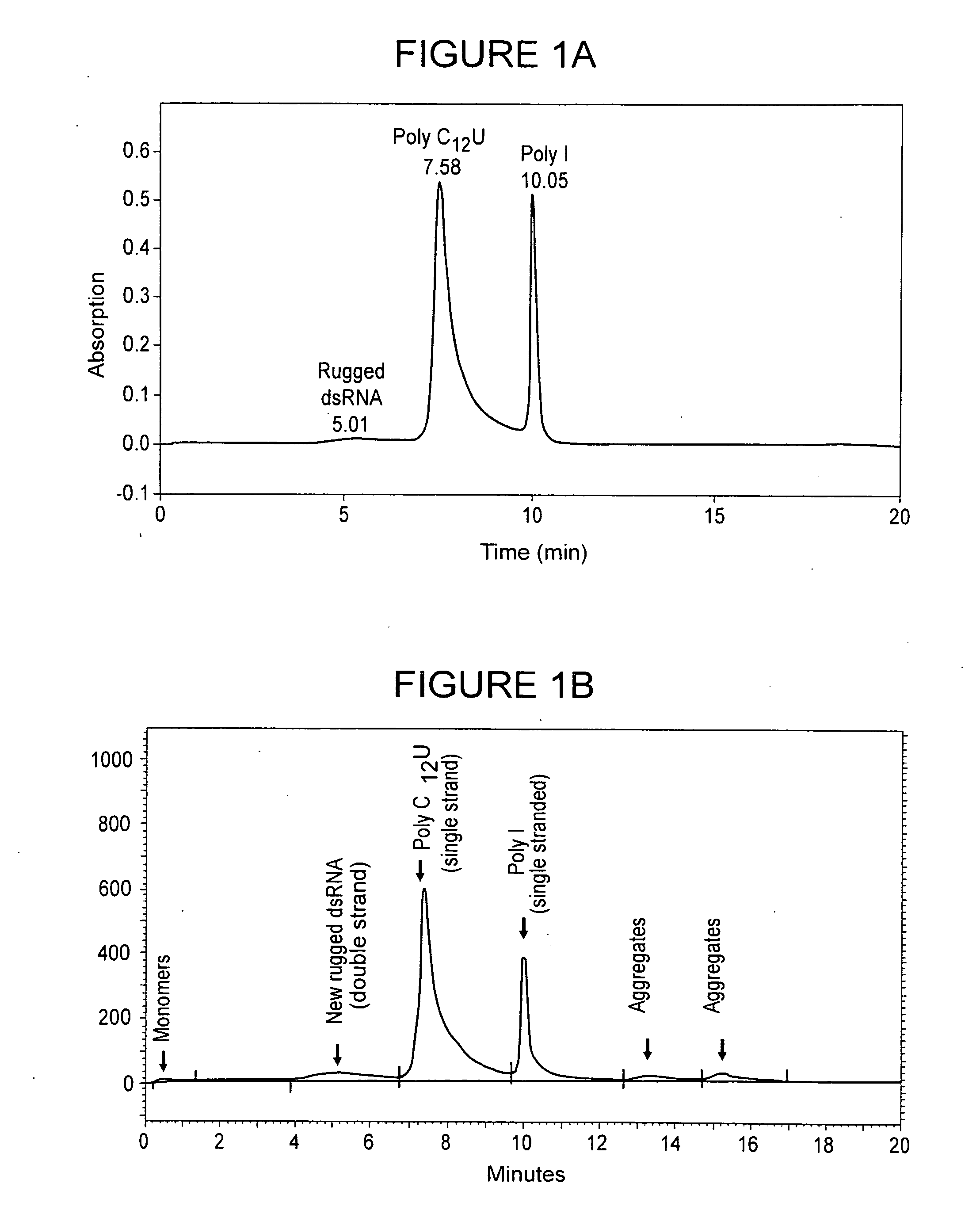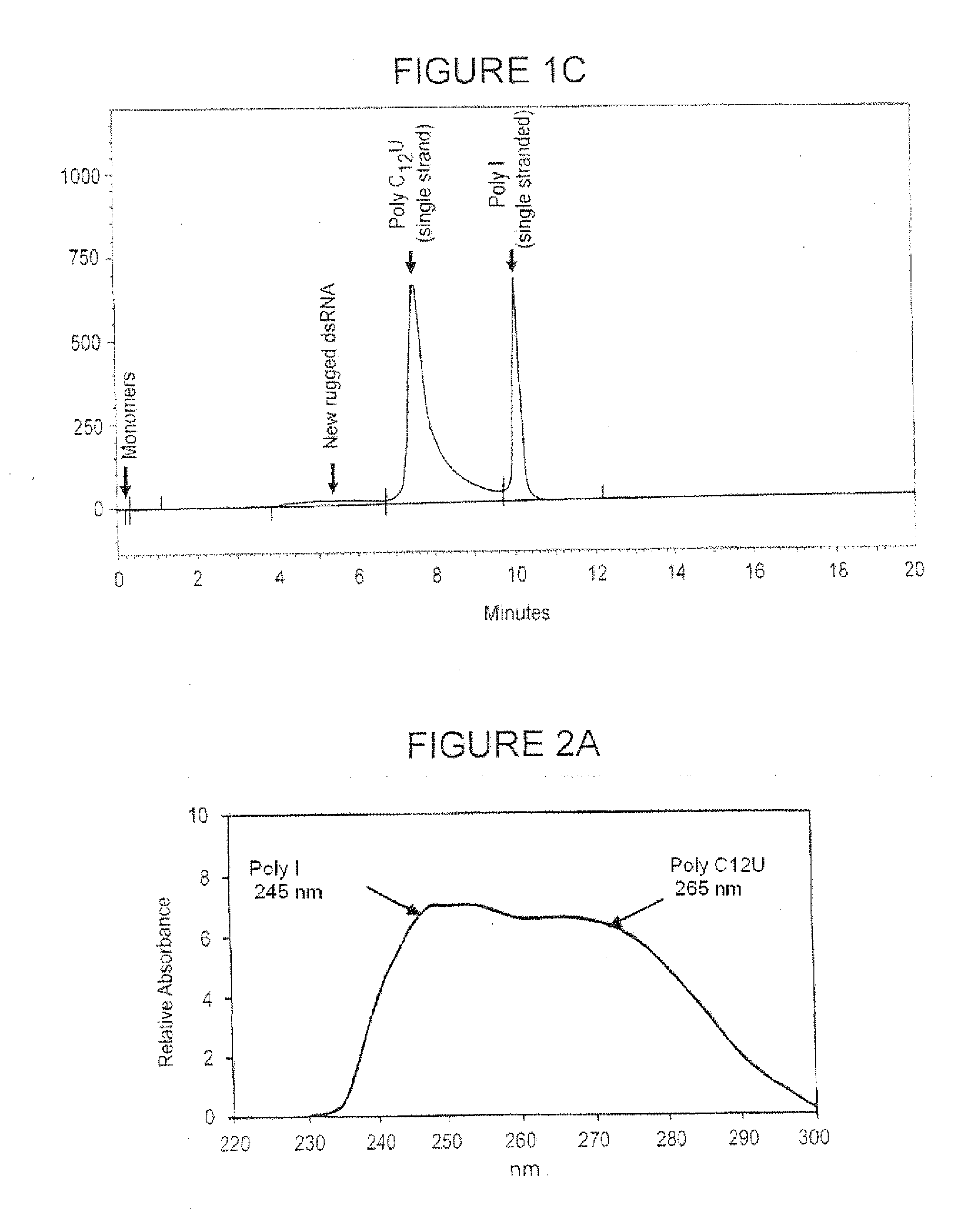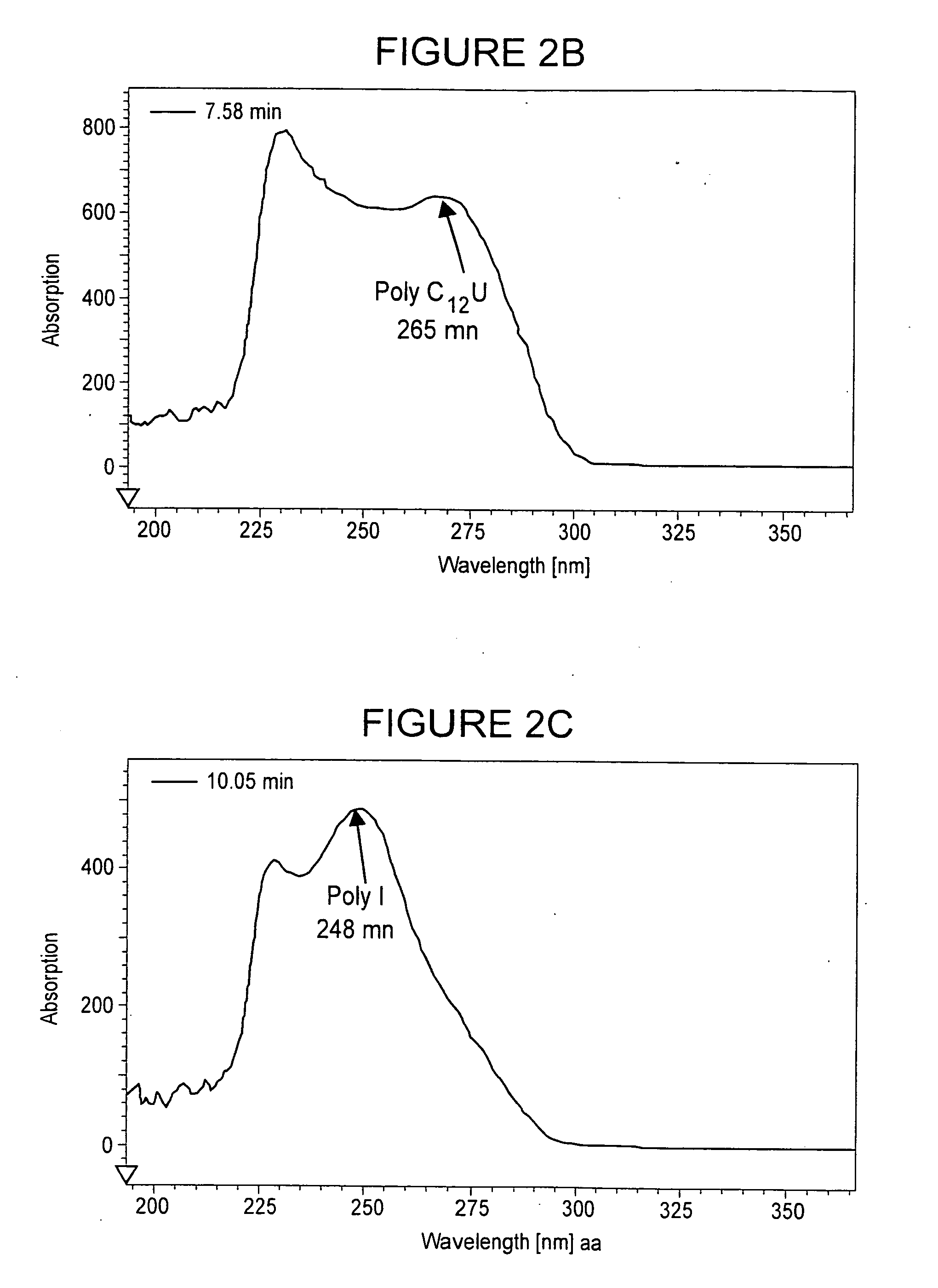Novel double-stranded ribonucleic acids with rugged physico-chemical structure and highly specific biologic activity
- Summary
- Abstract
- Description
- Claims
- Application Information
AI Technical Summary
Benefits of technology
Problems solved by technology
Method used
Image
Examples
examples
[0096]Synthesis of single-stranded poly(I) and poly(C12U) began with enzymatic polynucleotide synthesis of the polynucleotides from the respective mononucleotide starting materials: inosine for poly(I); cytidine (C) and uridine (U) for poly(C12U). Then repetitive extraction and precipitation steps were used to remove residual impurities. The reaction solutions containing the products were concentrated by ultrafiltration and extracted with phenol four times. The concentrated and extracted solutions were precipitated, dissolved, and re-precipitated from aqueous ethanol (50:50). Whereas precipitated poly(I) was separated by centrifugation, the supernatant (waste) liquid phase of adherent poly(C12U) was simply removed by aspiration. The precipitated pastes were re-dissolved, then concentrated, diafiltered, and further concentrated. The final bulk solutions containing polynucleotide was filtered. The filtered solution was freeze dried and the raw materials were stored frozen.
[0097]Enzyma...
PUM
| Property | Measurement | Unit |
|---|---|---|
| Temperature | aaaaa | aaaaa |
| Temperature | aaaaa | aaaaa |
| Temperature | aaaaa | aaaaa |
Abstract
Description
Claims
Application Information
 Login to View More
Login to View More - R&D
- Intellectual Property
- Life Sciences
- Materials
- Tech Scout
- Unparalleled Data Quality
- Higher Quality Content
- 60% Fewer Hallucinations
Browse by: Latest US Patents, China's latest patents, Technical Efficacy Thesaurus, Application Domain, Technology Topic, Popular Technical Reports.
© 2025 PatSnap. All rights reserved.Legal|Privacy policy|Modern Slavery Act Transparency Statement|Sitemap|About US| Contact US: help@patsnap.com



